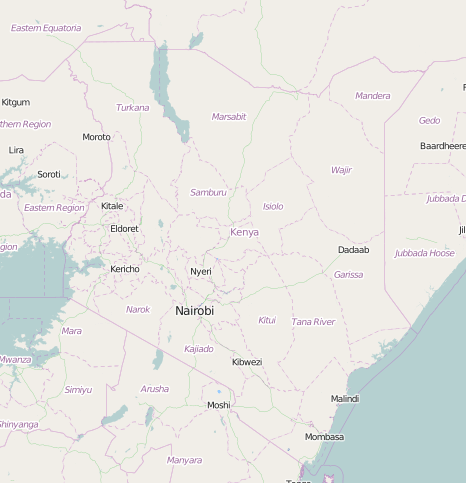Today we continue our regular series of country/regional OpenStreetMap profiles by speaking with Javin Ochieng about OpenStreetMap in Kenya.

1. Who are you and what do you do? What got you into OpenStreetMap
I’m Javin Ochieng a Nairobi based project consultant specializing in freelance digital web mapping. I got into OSM was out curiosity to learn about emerging technology and power behind OpenStreetMap.
2. What are the unique challenges and pleasures of OpenStreetMap in the Kenya?
Challenge number one mapping is not easy as many people think it requires a lot of energy and time especially when it comes to data collection and editing. Challenge number two most people in Africa still lack that knowledge to interpret maps hence making us to spend a lot of time to train them understand of what we’re doing.
3. What aspects of the projects should the rest of the world be aware of?
Mapping is fun, adventurous and educative…one can use a map to transform his or her community like the way we doing here in Mathare slum in Kenya. If I can remember well from the last five years we have been able to produce different types of thematic map e.g. education, health, security, flood maps and water sanitation maps and eventually monitoring of recent Kenya general election using ‘’Ushahidi and OpenStreetMap’’. The maps we have been producing we usually share them for free to different institutions (Government, NGO and County Government) which later uses our maps to improve some point of interest which they were interested with e.g. Plan International used our maps to locate areas which had no toilets later constructed and eradicated open defecation areas in Mathare to children playing field. UNESCO used our map in identifying flood prone areas and later developed an early warning system for disaster preparedness.
4. What steps could the global OpenStreetMap community take to help to help support OSM in Kenya specifically?
First I want say people are developing huge interest in mapping using OpenStreetMap here in Kenya. But the biggest problem we are having is exposure opportunities, proper training materials and logistical resources e.g. expensive GPS devices, laptops, internet to do effective mapping. If global OSM community can help in providing some these resources I think it will be better rather than waiting for donor institutions/community to provide them for us which sometimes end up not forthcoming hence discouraging people to participate in mapping activity. Lastly I will request Global OSM to think about setting up of OSM mapping hubs Kenya this will encourage people to discuss and share ideas.
5. I recall a few years ago some coverage of the Map Kibera project, one of the project that eventually lead to the creation HOT. How is that project specifically doing?
First I want to take this opportunity to thank Map Kibera project for creating an enabling environment in Kenya so that the youths can learn how to do digital mapping without going to a university. I am a product of Map Kibera and I am happy since through mapping I have been able to work with huge international organizations like UNESCO and UNEP. As the lead project consultant in some of their digital mapping project in Kenya and Ghana.
7. Last year OSM recently celeb rated its 10th birthday, where do you think the project will be in 10 years time, both globally and in Kenya specifically?
OSM is growing very fast and I think personally in the next ten years OSM will be a bigger mapping tool which so many people/organization will have embraced. OSM as a mapping tool for change both locally and internationally.
Many thanks Javin! Best of luck to you and all the Kenyan mappers.
You can see all the Open Geo interviews here. If you are or know of someone we should interview, please get in touch, we’re always looking to promote people doing interesting things with open geo data.